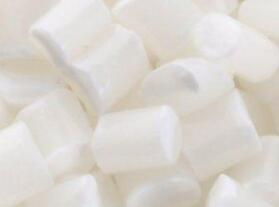 What Is the Polypropylene (pp resin polypropylene) injection molding Material? What Is the Polypropylene (pp resin polypropylene) injection molding Material?
Polypropylene/PP injection molding material is a thermoplastic addition polymer made by combining several propylene monomers. It features a wide range of applications that include packaging of consumer products, plastic components for such industries as the automotive industry. Relatively speaking, the surface of the PP plastic is very slippery, so in some low-friction applications, it can be used to replace some plastics like polyacetal (POM), or used as a contact point for furniture. One of the weaknesses of this property might be that it is not easy to adhere PP to the surface of other materials (it does not bond ideally with certain types of glues, so sometimes it needs to be welded when it is required to form a joint). PP is slippery at the molecular level, but it has a relatively high friction coefficient. As a result, POM, nylon, or PTFE will sometimes be used instead of it. When compared with other common plastics, PP also has a relatively lower density, meaning weight reductions for producers and sellers of injection-molded PP products. The features described above and below demonstrate that the PP material can be used in a great number of applications: safe plates of a dishwasher, food trays, and cups, etc., as well as opaque to-go containers and an extensive range of toys.
| |  What Properties Does Polypropylene Have? What Properties Does Polypropylene Have?
When producing PP injection molding, propylene polymerization is performed by involving stereospecific catalysts. Usually, it is isotactic PP that is produced (the methyl groups are lying on one side of the carbon chain). Due to the ordered molecular structure, this linear plastic is semi-crystalline, which is stiffer and has a higher melting temperature than PE. The PP homopolymer will become fragile when the temperature is higher than 0 degrees Celsius (32 degrees Fahrenheit). For this reason, many grades of PP available in the market are random copolymers with 1 – 4% ethylene or block copolymers with a higher ethylene proportion. Copolymers possess a lower heat distortion temperature (approx. 100 degrees Celsius / 212 degrees Fahrenheit), less clarity, surface gloss, and rigidity, but greater resistance to impact. When the ratio of ethylene increases, this material will become tougher and tougher. It's Vicat softening temperature is about 150 degrees Celsius (302 degrees Fahrenheit). For these materials, the surface hardness and resistance to scratch are higher thanks to the higher levels of crystallinity. | |
The PP plastic is not prone to stress cracking. It is usually adjusted by adding glass fibers, mineral fillers, or thermoplastic rubbers. The melt flow rate of the PP material ranges between 1 and 40; materials with a lower melt flow rate feature a better resistance to impact but lower tensile strength. When compared with homopolymer of the same melt flow rate, the copolymer appears to be tougher. Its viscosity leads to more shear while being more temperature-sensitive than PE.
By virtue of its crystallinity, the shrinkage rate of PP is quite high (0.018 – 0.025 mm/mm or 1.8 – 2.5%), but its shrinkage is more uniform than that of PE-HD (the variance in flow and cross-flow shrinkage is usually lower than 0.2%). An increase of glass by 30% is helpful in reducing the shrinkage rate to about 0.7%.
Both the homopolymer and copolymer PP injection molding materials are strongly resistant to moisture, as well as chemicals like acids, alkalis, and solvents. But, it does not offer excellent resistance to aromatic hydrocarbons, like benzene, as well as chlorinated hydrocarbons, like carbon tetrachloride. And, under high-temperature conditions, its resistance to oxidation is not as strong as that of PE plastic.
| |









 What Is the Polypropylene (
What Is the Polypropylene ( What Properties Does Polypropylene Have?
What Properties Does Polypropylene Have?

